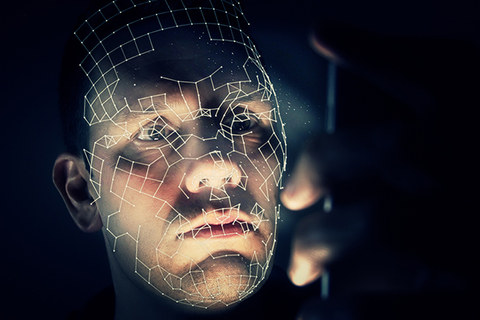
The age of sensor technology is upon us. It is hard to find a technological sector that is not dominated by sensors. Today’s smartphones are loaded with at least dozens of sensors including a proximity sensor, fingerprint sensor, GPS, gyroscope, accelerometer, and barometer. Furthermore, some smartphones have an integrated heart-rate sensor.
This age of sensors is led by the motto, the smaller, the better. Researchers have developed sensors that are about the size of the tip of a needle. A manufacturer of low-power and ultrasonic 3D sensing products, Chirp Microsystems, has developed a novel millimeter-sized time-of-flight (ToF) sensor that uses extremely low power compared to the other ToF sensors on the market. Such inventions are possible due to an innovative technology called sensor fusion, which leverages microcontrollers to fuse the data collected by multiple sensors.
Emotion Detecting Sensors That Mimic Human Beings
Incorporation of sensor fusion in the internet of things (IoT) is not a far-fetched idea. An ideal IoT application requires numerous sensors to collect data, a wired or wireless communication service, cloud-based processing, and a secure connection across all networks. The use of sensor fusion makes the programming simpler and helps speed up the process. Moreover, sensor fusion enables context awareness, which has vital importance in IoT applications.

Sensor fusion and context-aware data can develop exciting applications. Such services use the context of what users or machines are doing, how an infrastructure is developing, and what nature is going through over last few years.
Today’s sensors are more evolved, and focused on mimicking the world’s smartest sensing machine: a human being. Context awareness can be used to detect emotions by observing how users hold a mobile phone, how much time they take to type, how many mistakes they make while texting, or how long they converse with someone on a mobile phone. Moreover, a software program can extract the context of the state of mind by analyzing the way one holds a phone, how many times one uses backspace while texting, and how jerky movement is while talking.
IoT Sensors in Tracking
The use of IoT sensors in tracking for luggage has become a common practice. However, Unisys released an IoT solution that provides real-time tracking of pets as they are being transported from airport to their desired location. Digi-Pet, the IoT-based solution to track pets uses Wi-Fi and a cellular network to share the sensor data with the respective owner. The hardware required for the app is minimal, however, owners require the Digi-Pet sensor attached to the pet’s kennel.
The pet-monitoring app was developed by Dheeraj Kohli, who believes that several animals get injured and, in some cases, killed during transportation. Digi-Pet uses IoT to give a real-time feedback of their pet’s safety and location to the owners. The IoT sensor monitors temperature, vibration, light, and oxygen level of the kennel, and provides two-way communication between the pet and the owner.
In another study, a system was developed to monitor water level by means of ultrasonic sensor, pressure transducer, or radar level sensor and IoT connectivity. The information collected by sensors is integrated with IoT sensor technologies.
The system uses Wi-Fi and a cellular network to upload the sensor information to the cloud, and at the end, the user gets a conclusion from the data collected by all the sensors. Moreover, the applications of the IoT in the automotive industry are limitless including connecting cars and smart cars, which boosted the automotive sensor market. According to a report on the automotive sensors market published by Progressive Markets, the market was valued at $20,458 million in 2014, and is likely to grow at a CAGR of 5.36% during 2018–2025.
Smartphone Embedded with Blood Pressure Detecting Sensors
The use of a cuff and stethoscope can be very tiresome. Researchers at the Michigan State University and the University of Maryland have published a paper that describes a prototype that can measure blood pressure by using only a fingertip. The device tracks blood pressure to catch signs of hypertension. The smartphone with an integrated sensor capable of photoplethysmography (PPG), an optical tool that observes blood volume, combines and works with a force transducer that measures applied pressure. After pressing a fingertip on the sensor, the program calculates blood pressure similar to how a traditional blood-pressure cuff would.
There were several trials to develop such a “cuffless” blood pressure monitor. One approach was using pulse-transit time, which requires two sensors: one near the heart and another on a wrist. The device measures the time taken by blood to travel from heart to wrist. However, integration of PPG in a smartphone saves time and eliminates the bulky apparatus.
Sensors and AI Teams Up to Beat Deforestation
In a fair estimate, we lose about 80,000 and 150,000 square kilometers of the world’s forests every year. However, it is hard to nail down exactly what part of the world has lost more trees, especially when 90% of tropical deforestation is due to criminal activity.
A team of engineers and developers built a system of sensors that can endure harsh weather conditions. The device will remain hidden all times in noted vulnerable areas. The sensors will record and upload the sounds of a forest onto a remote cloud-based server in real time. Google’s artificial intelligence (AI) will go through the data to detect suspicious noises such as the sound of chainsaw and/or logging vehicles.
The advancement in AI and effective laws against such criminal activities could result in conservation of forest on a large platform. Moreover, such incorporations of AI and the IoT with advanced sensors will make a positive change in the world for sure.
About the author
Nisha Dodeja, is a keynote senior consultant on digital marketing at Allied Market Research. Nisha has written several whitepapers, case studies, and articles. She is a visiting faculty member at various educational institutions and has expertise in Construction and Manufacturing.